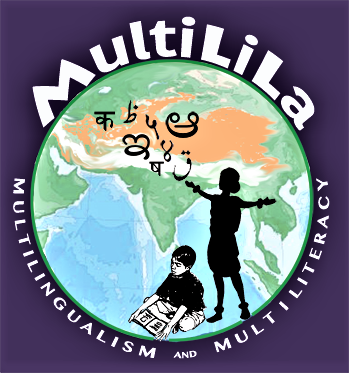Multilingual Education in Practice: GCRF classroom films project: Hyderabad_Film 1
Duration: 24 mins 14 secs
Share this media item:
Embed this media item:
Embed this media item:
About this item

| Description: | In this lesson, the teacher aims to focus on different festivals in India to support cross-cultural understanding of children who practise different religions. |
|---|
| Created: | 2019-10-29 10:36 |
|---|---|
| Collection: |
MML
Cambridge Language Sciences |
| Publisher: | University of Cambridge |
| Copyright: | Dr Connie P.Y. Tang |
| Language: | eng (English) |
| Distribution: |
World
|
| Keywords: | Low-cost English medium private school; Hyderabad; India; Social studies; Festivals; cross-cultural understanding of children who practise different religions; |
| Categories: |
iTunes - Language - Linguistics |
| Explicit content: | No |
| Aspect Ratio: | 4:3 |
| Screencast: | No |
| Bumper: | UCS Default |
| Trailer: | UCS Default |
| Abstract: | The official language of instruction in this school is English, but it is clear that the levels of proficiency among the students in English are very mixed. The majority of the students in the class speak the state language Telugu to a good level, although this may not be their home language. A recent joinee – Ananya – is more comfortable using Hindi. As a result, Jyothi makes an effort to include her in class discussions by encouraging her to use Hindi to share her ideas.
Throughout the lesson, Jyothi uses Telugu and Hindi to scaffold learning. In particular, she uses them when giving instructions for tasks to check these are clearly understood. She asks some concept checking questions and gives definitions of key words in Telugu and sometimes Hindi. She also allows the learners to choose which language they use when speaking in front of the rest of the class. It is interesting to see how both the children and the teacher naturally mix languages in the classroom to express themselves, reflecting the multilingual context outside of the school. From a pedagogical perspective, the teacher attempts to involve the learners using a variety of activities and encourages pair and group work. However, perhaps because of low levels of confidence and/or proficiency in English, the production of language by the learners in the target language – English – is quite limited. Similarly, there are quite low expectations of what learners can achieve through the lesson in terms of creatively thinking about the language they use or critically thinking about the subject topic. The Social Studies lesson is a good example of how language and content can be used together to deal with cognitive and affective aspects alongside the required language, and so there are opportunities to move away from labelling only or recalling already known words/ideas on the part of students. However, , the use of language and focus on festivals were somewhat limited to the dominant communities – in her reflection at the end of the lesson, the teacher mentions that she tried to encourage one learner from the Lambadi tribal community to use his mother tongue and discuss festivals from his culture but that he was reluctant to do so. This suggests that there is an ongoing need to build trust and engagement from members of the class from minority groups, to work towards greater inclusion and celebration of the full diversity of backgrounds present in the class. |
|---|---|
Available Formats
| Format | Quality | Bitrate | Size | |||
|---|---|---|---|---|---|---|
| MPEG-4 Video | 640x360 | 1.93 Mbits/sec | 351.06 MB | View | Download | |
| WebM | 640x360 | 2.0 Mbits/sec | 363.86 MB | View | Download | |
| iPod Video | 480x360 | 519.46 kbits/sec | 92.20 MB | View | Download | |
| MP3 | 44100 Hz | 249.8 kbits/sec | 44.40 MB | Listen | Download | |
| Auto * | (Allows browser to choose a format it supports) | |||||

